The Islamic State
The Islamic State
A Comparative History of Jihadist Warfare
Anthony Celso
LEXINGTON BOOKS
Lanham Boulder New York London
Published by Lexington Books
An imprint of The Rowman & Littlefield Publishing Group, Inc.
4501 Forbes Boulevard, Suite 200, Lanham, Maryland 20706
www.rowman.com
Unit A, Whitacre Mews, 26-34 Stannary Street, London SE11 4AB
Copyright 2018 The Rowman & Littlefield Publishing Group, Inc.
All rights reserved . No part of this book may be reproduced in any form or by any electronic or mechanical means, including information storage and retrieval systems, without written permission from the publisher, except by a reviewer who may quote passages in a review.
British Library Cataloguing in Publication Information Available
Library of Congress Cataloging-in-Publication Data
Names: Celso, Anthony, author.
Title: The Islamic state : a comparative history of Jihadist warfare / Anthony Celso.
Description: Lanham, Maryland : Lexington Books, 2018. | Includes bibliographical references and index.
Identifiers: LCCN 2018014961 (print) | LCCN 2018018418 (ebook) | ISBN 9781498569798 (electronic) | ISBN 9781498569781 (cloth : alk. paper)
Subjects: LCSH: IS (Organization) | Middle EastHistory21st century. | Jihad. | Islamic fundamentalism. | WarReligious aspectsIslam.
Classification: LCC HV6433.I722 (ebook) | LCC HV6433.I722 C45 2018 (print) | DDC 363.3250956dc23
LC record available at https://lccn.loc.gov/2018014961
 The paper used in this publication meets the minimum requirements of American National Standard for Information SciencesPermanence of Paper for Printed Library Materials, ANSI/NISO Z39.48-1992.
The paper used in this publication meets the minimum requirements of American National Standard for Information SciencesPermanence of Paper for Printed Library Materials, ANSI/NISO Z39.48-1992.
Printed in the United States of America
For Alicia, Diana and Jezebel
Contents
This book builds upon the past scholarship of many noted authorities. Among those, the ideas and research of Jeffrey Kaplan, Daveed Gartenstein-Ross, Aaron Zelin, Jacob Zenn, Michael WS Ryan, Brian Fishman, William McCants, Fernando Reinares, Aymenn Jawad al-Tamimi and Thomas Hegghammer have been particularly influential. They have provided the corpus of ideas and body of research without which this book is impossible. Comparable gratitude must also be extended to the research done by The Long War Journal, The Institute for the Study of War, The Washington Institute for Near East Policy, The Combating Terrorism Center at West Point, Elcano Royal Institute and the Jamestown Foundation. The quality work done by these institutions is without peer. Finally, the support I received from my colleagues (Dr. Bruce Bechtol Jr. and Dr. William Taylor) has encouraged me to write this book.
The Islamic State of Iraq (ISI) resurgence from its near 2010 defeat and its later territorial extension across the Levant was a significant development. The Syrian civil war and the power vacuum left by the American disengagement in Iraq after 2011 enabled ISI to reconstitute its terror network. Freed from American influence the Iraqi regime led by Nouri al-Maliki pursued a sectarian agenda that alienated the Sunni minority and allowed ISI to present itself as their defender . Baghdads anti-Sunni policies became the wellspring of ISIs popular support.
From 2011 to 2014 ISIs terror and insurgent campaigns degraded Iraqi security forces allowing the organization to conquer territory.
ISISs formation generated shock waves across the region. By summer 2014 ISIS routed the Iraqi army and seized territory in Northwest Iraq occupying Mosul and much of Anbar Province. ISIS punctuated its territorial conquests with high-profile massacres of Shiite soldiers and Iraqi Yazidi communities.
Since August 2014 a US-led coalition of sixty nations has uprooted ISs reign across the Levant. By late 2017 Mosul and Raqqa were conquered. The ISs ability to withstand the coalitions military assault for over three years was remarkable. Destroying and degrading the caliphate was difficult. This accomplishment should not be confused with the destruction of ISs terror-insurgent movement. It endures.
The networks global reach is highlighted by its terrorist attacks in Paris, Sousse, Barcelona, Manchester, London, New York, Stockholm, Nice, Brussels, Dacca, Berlin, Beirut, Sana, Istanbul, St. Petersburg, San Bernardino, Orlando and Ankara. The movements continued violence even after the demise of its transnational state in 2017 suggests resiliency.
The ISs ascent is unequalled among jihadist organizations. Its June 2014 caliphate creation satisfies an extremist aspiration that has endured since Turkish leader Kemal Ataturks 1924 abolition of the Ottoman Empire. Such a desire was considered a long-term goal by virtually all jihadists. Based on his formation of a transnational jihadist state IS leader Abu Bakr al-Baghdadi (self-proclaimed as Caliph Ibrahim) controversially demanded the loyalty of the Muslim world and urged their emigration [ hijrah ] to his caliphate. Though its leadership of the Islamic extremist movement is contested by the Taliban and its Al Qaeda (AQ) allies, the IS is the worlds most preeminent jihadist organization.
The groups threat to the international order transcends all other terror networks including AQ. Its proto-jihadist state eclipsed the nineteenth-century Sudanese Mahdist regime that also threatened Western interests. Its policy of baqiya wa tatamaddad [remaining and expanding] drove it to conquer territories in pursuit of its state-building project. This book analyzes the IS within a comparative framework of past jihadist experiments.
Modern jihadism is notable for its failures making ISs state-building project puzzling. The Islamist record in the 1980s and 1990s is especially dismal with jihadist movements in Egypt, Libya, Syria and Algeria defeated by security services. What accounts for ISs success in light of these debacles and will the ISs movement endure? These two questions shape this study. By employing a comparative framework the book overcomes the limitations of singular studies of terror movements. Though rich in theoretical and empirical detail, books by William McCants, Loretta Napoleoni, Charles Lister, Patrick Cockburn, Michael Weiss, J. M. Berger and Jessica Stern offer us an important snapshot of IS without putting its development within a larger comparative context. It neither effectively explains the resiliency and growing brutality of jihadist insurgency.
A comparative model offers a richer canvass for exploration of why IS succeeded and others failed. The ISs accomplishments, moreover, may be connected to previous failures. The networks adaptive strategy compensates for the shortcomings that have impaired past jihadist insurgencies. Evidence suggests that the IS learned from the failure of its AQ in Iraq (AQI) predecessor IS began its reconfiguration during the US occupation of Iraq. Imprisoned at the American detention center Camp Bucca extremist militants and former Baathists plotted and conspired to reinvigorate jihadist insurgency. The network of allegiances developed by Abu Bakr al-Baghdadi at this prison would eventually evolve into the core leadership of what would become the Islamic State. Once the Americans left Baghdadi and his inner coterie were able to rebuild ISI into a formidable terrorist and insurgent network.
Capitalizing on Baghdads repression of the Sunni minority in post US Iraq and the Syrian civil wars sectarian hatreds, ISI was able to secure Sunni tribal support for its insurgent movement. The groups pragmatic alliance with Baathist insurgent groups augmented its fighting capacity. Its embrace of a sectarian and apocalyptic worldview and its expansion into eastern Syria produced unprecedented divisions within the jihadist movement. Its break from AQ in February 2014 shows a dramatic divergence in strategic and ideological paths. ISs media inveigh against AQ and lambasts the treacherous apostate behavior of Zawahiris then Syrian affiliate Jabhat al-Nusra (JN).

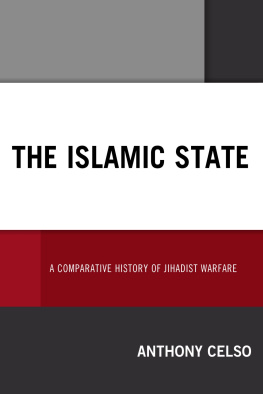

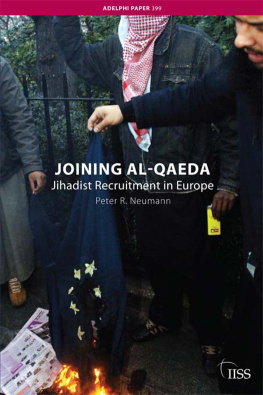


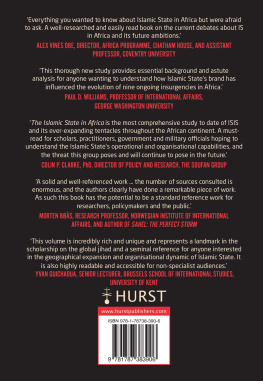
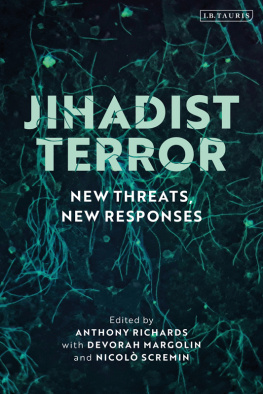



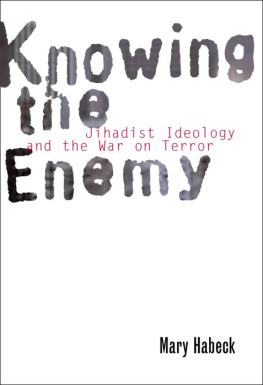
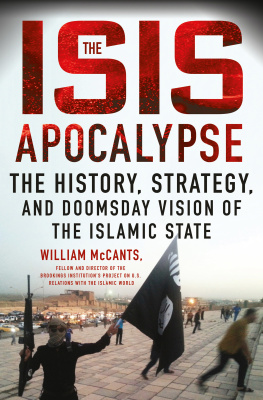


 The paper used in this publication meets the minimum requirements of American National Standard for Information SciencesPermanence of Paper for Printed Library Materials, ANSI/NISO Z39.48-1992.
The paper used in this publication meets the minimum requirements of American National Standard for Information SciencesPermanence of Paper for Printed Library Materials, ANSI/NISO Z39.48-1992.